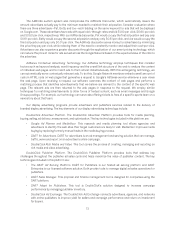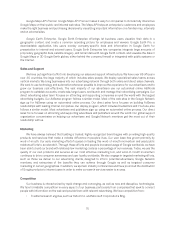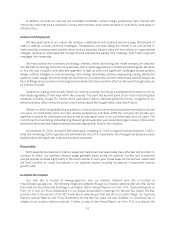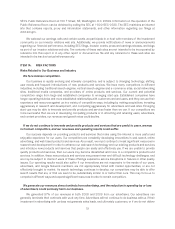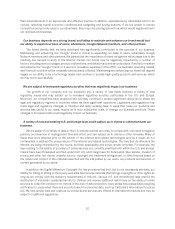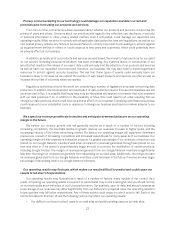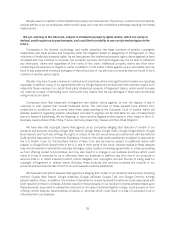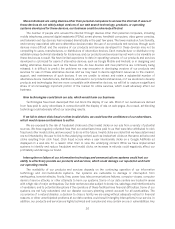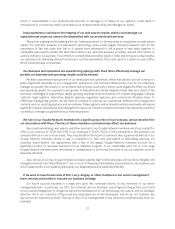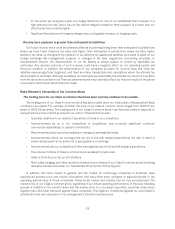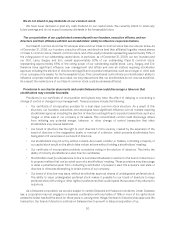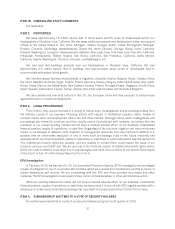Google 2009 Annual Report Download - page 40
Download and view the complete annual report
Please find page 40 of the 2009 Google annual report below. You can navigate through the pages in the report by either clicking on the pages listed below, or by using the keyword search tool below to find specific information within the annual report.• Longer payment cycles in some countries.
• Uncertainty regarding liability for services and content.
• Credit risk and higher levels of payment fraud.
• Currency exchange rate fluctuations and our ability to manage these fluctuations under our foreign
exchange risk management program.
• Foreign exchange controls that might prevent us from repatriating cash earned in countries outside the
U.S.
• Import and export requirements that may prevent us from shipping products or providing services to a
particular market and may increase our operating costs.
• Potentially adverse tax consequences.
• Higher costs associated with doing business internationally.
• Different employee/employer relationships and the existence of workers’ councils and labor unions.
In addition, compliance with complex foreign and U.S. laws and regulations that apply to our international
operations increases our cost of doing business in international jurisdictions and could interfere with our ability to
offer, or prevent us from offering, our products and services to one or more countries or expose us or our
employees to fines and penalties. These numerous and sometimes conflicting laws and regulations include import
and export requirements, content requirements, trade restrictions, tax laws, sanctions, internal and disclosure
control rules, data privacy and filtering requirements, labor relations laws, U.S. laws such as the Foreign Corrupt
Practices Act, and local laws prohibiting corrupt payments to governmental officials. Violations of these laws and
regulations could result in fines, criminal sanctions against us, our officers, or our employees, prohibitions on the
conduct of our business, and damage to our reputation. Although we have implemented policies and procedures
designed to ensure compliance with these laws, there can be no assurance that our employees, contractors, or
agents will not violate our policies. Any such violations could include prohibitions on our ability to offer our
products and services to one or more countries, and could also materially damage our reputation, our brand, our
international expansion efforts, our ability to attract and retain employees, our business, and our operating results.
If our security measures are breached, or if our services are subject to attacks that degrade or deny
the ability of users to access our products and services, our products and services may be perceived as
not being secure, users and customers may curtail or stop using our products and services, and we may
incur significant legal and financial exposure.
Our products and services involve the storage and transmission of users’ and customers’ proprietary
information, and security breaches could expose us to a risk of loss of this information, litigation, and potential
liability. Our security measures may be breached due to the actions of outside parties, employee error,
malfeasance, or otherwise, and, as a result, an unauthorized party may obtain access to our data or our users’ or
customers’ data. Additionally, outside parties may attempt to fraudulently induce employees, users, or customers
to disclose sensitive information in order to gain access to our data or our users’ or customers’ data. Any such
breach or unauthorized access could result in significant legal and financial exposure, damage to our reputation,
and a loss of confidence in the security of our products and services that could potentially have an adverse effect
on our business. Because the techniques used to obtain unauthorized access, disable or degrade service, or
sabotage systems change frequently and often are not recognized until launched against a target, we may be
unable to anticipate these techniques or to implement adequate preventative measures. If an actual or perceived
breach of our security occurs, the market perception of the effectiveness of our security measures could be
harmed and we could lose users and customers.
22



